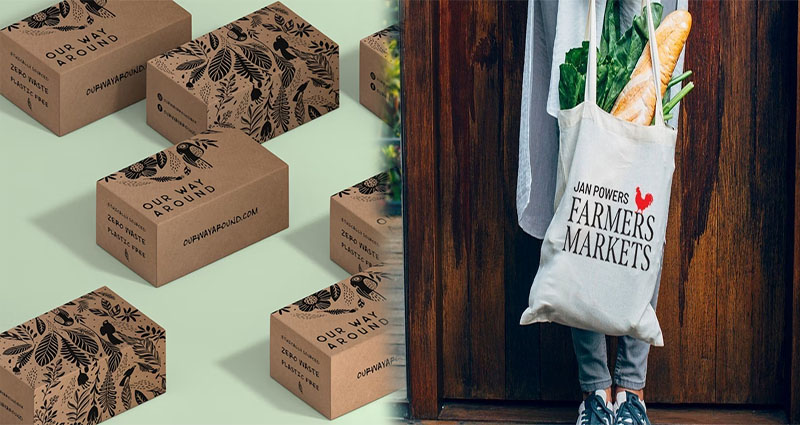Eco-friendly graphic design is a growing trend in the industry, with many designers adopting sustainable approaches to their work. This has been driven by clients asking for more eco-friendly options (and paying more for them), as well as an increase in awareness of the impact that design can have on the environment. I’ll cover the top four ways designers can make their work more eco friendly: reducing waste and consumption, reusing materials whenever possible, recycling as much as possible, and using paper from sustainable sources.
Eco-Friendly Graphic Design
Graphic design is a creative industry that uses different mediums to create designs. Designers use different materials and processes to create their work, each of which has its own environmental impact.
The rise of eco-friendly graphic design can be attributed to an increased awareness among designers about the impact their choices have on the environment. As more people become aware of this issue, more designers are looking for ways to reduce their carbon footprint through more sustainable practices and materials.
1. Reduce, Reuse, and Recycle
- Reduce the amount of paper you use.
- Reuse the paper that you have already used.
- Recycle any other materials that you have used.
2. Avoid Water-Based Inks
- Avoid water-based inks.
- Water-based inks, while they may be more eco-friendly than older, oil-based inks, still contain toxic chemicals that can be harmful to the environment and humans who use them. These chemicals are a major source of pollution in our oceans and lakes.
3. Print on Recycled Paper
- Print on Recycled Paper
Printing on recycled paper is a great way to reduce your carbon footprint, and it’s also good for the environment. The best eco-friendly graphic design firms will use 100% post-consumer recycled paper in their printing process and soy inks instead of petroleum-based pigments or dyes. If you want to go one step further, look for a company that uses waterless printing techniques such as laser printing or inkjet technology–these methods are better for both the environment and your budget!
4. Use Carbon Footprint Calculator to Determine Environmental Impact
The Carbon Footprint Calculator is a useful tool for determining the environmental impact of your design. It allows you to determine the carbon footprint of your design, and it also provides tips on how you can make your design more eco-friendly.
- Determine the carbon footprint of your design by entering its size into the calculator (in inches or cm).
- Use this information to determine how much paper was used in its creation, as well as other factors such as ink or toner consumption and electricity usage from computers and printers used during production.
- You’ll see an estimate for total greenhouse gas emissions associated with making this piece of paper based on industry averages for these factors; this number represents only part of what goes into producing something like a poster or flyer–it doesn’t include pollution caused by transporting materials between manufacturers and suppliers (which often happens overseas) nor does it account for any waste created during production itself.*
Graphic designers can make their designs more eco friendly by being more conscientious about how they create their graphics.
Now that you know the basics of eco-friendly graphic design, here are some things to keep in mind when creating your next project:
- Reduce the amount of paper used. For example, use a single sheet of paper instead of printing on both sides and cutting it down to size. This can save up to 50% of your paper usage!
- Reuse materials where possible. If you have leftover ink from one job and need another color for another project, reuse what’s left over rather than buying new ink or toner cartridges (which would be wasteful).
- Recycle paper and other materials whenever possible–this is especially important if you work with clients who don’t recycle themselves! You could even offer them discounts if they bring back old documents/boxes/etc., as well as offer incentives such as freebies like pens or calendars at the end of each year if they’re willing enough not only because they care about saving money but also because they want something nice after all those hours spent working together throughout months/years…
Graphic design is a powerful tool that can be used to make a positive impact on the environment. We hope this article has given you some ideas on how to go green with your designs, and we encourage you to keep learning more about eco-friendly practices in order to continue being an environmentally conscious graphic designer or client!











